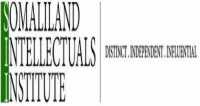Clarifying Historical Realities: Somaliland's Right to Unilateral Agreements
Somaliland Strategic Advisory Group (SL-SAG)
For immediate release – January 12, 2024
In the pursuit of an accurate portrayal of the historical and political landscape in the Horn of Africa, it is imperative to address recent tensions between the Somalia Federal Government and Somaliland, specifically regarding theMemorandum of Understanding (MoU) between Somaliland and Ethiopia. The following points elucidate Somaliland’s legitimate right to engage in agreements independently and unilaterally:
I. Unratified Union: It is crucial to acknowledge that the Somali Republic originated from the envisioned 1960 union of two distinct territories – former British Somaliland and former Italian Somalia. However, the Act of Union between the two governments was never legally jointly ratified by the Somaliland and the Italian Somalia parliamentary bodies. The Somaliland legislature agreed to 27 articles, but the Somali-Italian legislators never ratified these agreed-upon articles. Instead, they independently drafted and signed two separate articles, leading to an illegitimate union. Hence, in 1991, Somaliland emerged from the aftermath of genocide, a fact recognized by the United Nations in a 2001 report investigating Somalia’s genocide against Somaliland.
II. Sovereignty Reclaimed: Somaliland, in response to theatrocities committed against its people, reclaimed its sovereignty, establishing a distinct trajectory separate from former Italian Somaliland. Simultaneously, the Italian Somaliland formed the Federal Republic of Somalia, and both regions pursued independent paths.
III. Non-Participation in Federal Government Formation: The people of Somaliland did not participate in the process leading to the formation of the Somalia Federal Government. This decision, according to Somaliland leadership, was a precaution against a recurrence of the deceitful political maneuvering that occurred in Mogadishu in 1960. This non-participation underscores Somaliland’s commitment to self-determination and unique governance aspirations.
IV. Commitment to Self-Determination: Somaliland was never part of the process of forming the Somalia Federal Government, emphasizing its dedication to self-determination and distinctive governance aspirations.
V. Democratic Governance Structure: Somaliland operates under a governance structure consisting of a directly elected government, parliament, and independent judiciary. This unique political system reflects an unwavering commitment to democratic principles, ensuring effective checks and balances within the state apparatus.
In conclusion, the Somalia Federal Republic must adopt a realistic perspective and recognize Somaliland as an independent country. While maintaining open channels of communication, both Somaliland and Somalia can collaboratively establish the groundwork for enduring peace and mutual prosperity in the region. Acknowledging each other’s sovereignty and fostering effective communication can pave the way for resolving long-standing disputes in the future.
